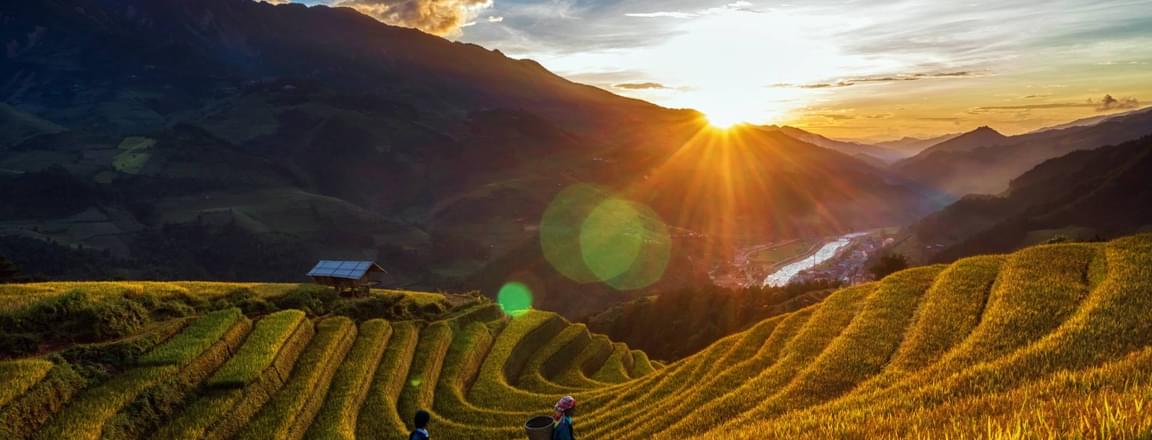
Vietnam Travel Guide - Explore & Plan Your Trip

Vietnam is an incredible destination with a diverse range of natural beauty, rich cultural and historical heritage and breathtaking landscapes that provide for an unforgettable experience. The busy markets of Hanoi and Ho Chi Minh to the peaceful waters of Halong Bay, Vietnam tourism has become popular for the authentic blend of modernity and traditions that it provides. Regardless of whether you want to explore the limestone cliffs and caves, indulge in the delicious native cuisine or even cruise through the Mekong River Delta, this destination has its own unique appeal to all kinds of travellers. If you want to know more about the perfect time to visit, what activities to engage in, and the different attractions to visit, then keep reading this Vietnam travel guide.
Top Attractions in Vietnam
Vietnam is decked with ancient historical and cultural landmarks, beautiful natural landscapes and vibrant cities that make it a destination that cannot be missed. This destination is mainly known for the wonderful colonial architecture, the gorgeous rice terraces and the busy markets that cater to everyone’s shopping needs. Whether you are a history buff, a nature lover or want to explore the native culture, there are a number of famous landmarks in Vietnam that must definitely be visited during your visit to the country. They include Hanoi, Halong Bay, Sapa, Hoi An, Da Nang and Ho Chi Minh City, among several others.
Best Time to Go to Vietnam
Vietnam experiences four seasons that provide for a unique experience no matter when you are planning on visiting the country. The most ideal time to travel to Vietnam largely depends on the type of activities you want to partake in, your travel preferences and your budget. Northern Vietnam experiences four distinct seasons, particularly summer, winter, autumn and spring, adding beautiful weather to destinations like Hanoi, Halong Bay and Sapa. Whereas places like Hue, Da Nang, Hoi An and Nha Trang in Central Vietnam and Ho Chi Minh, Mekong Delta and Phu Quoc in Southern Vietnam primarily have only dry and wet seasons.
Activities to Enjoy in Vietnam
There are a number of different exciting things to do in Vietnam, whether it is cultural exploration, admiring the nature or even indulging in the native delicacies. Some interesting activities to engage in include cruising through Halong Bay, exploring Hanoi's Old Quarter, going on a trek through Sapa’s rice terraces, delighting in the native Vietnamese cuisine or even visiting the ancient town of Hoi An. Make the most of these wonderful experiences and enjoy everything that Vietnam has to offer.
Essential Tips for Travelling to Vietnam
| Essential | Details |
| Currency | Vietnamese Dong (VND) |
| Visa | E-visa available for up to 30 days, beyond which a tourist visa is required. |
| Airports | Noi Bai International Airport (HAN), Tan San Nhat International Airport (Ho Chi Minh City), Da Nang |
| Transportation | Motorbike taxis or GrabBike, regular taxis, buses, trains and domestic flights. |
| Dress Code | Light and breathable clothing for summer, warm and thick clothing in winter and modest clothing covering shoulders and legs while visiting temples and religious places. |
| Alcohol | Beer and local rice wine are popular; some bars tend to close early due to religious holidays. |
| Health Precautions | Choose busy stalls for freshness at street markets and drink only bottled water. |
Why Visit Vietnam With Pickyourtrail?
Vietnam is a destination that offers a wide diversity of activities and attractions that provide an amazing experience for all types of visitors. If you want to enhance your trip experience, then consider making your booking through Pickyourtrail, where you get access to expertly curated packages or even customise your own. Moreover, your entire visa process is taken care of by our visa experts and you are assisted with constant concierge support to assist with all your travel needs. Start planning your dream vacation now and have the best trip of your life!
Update your location?



